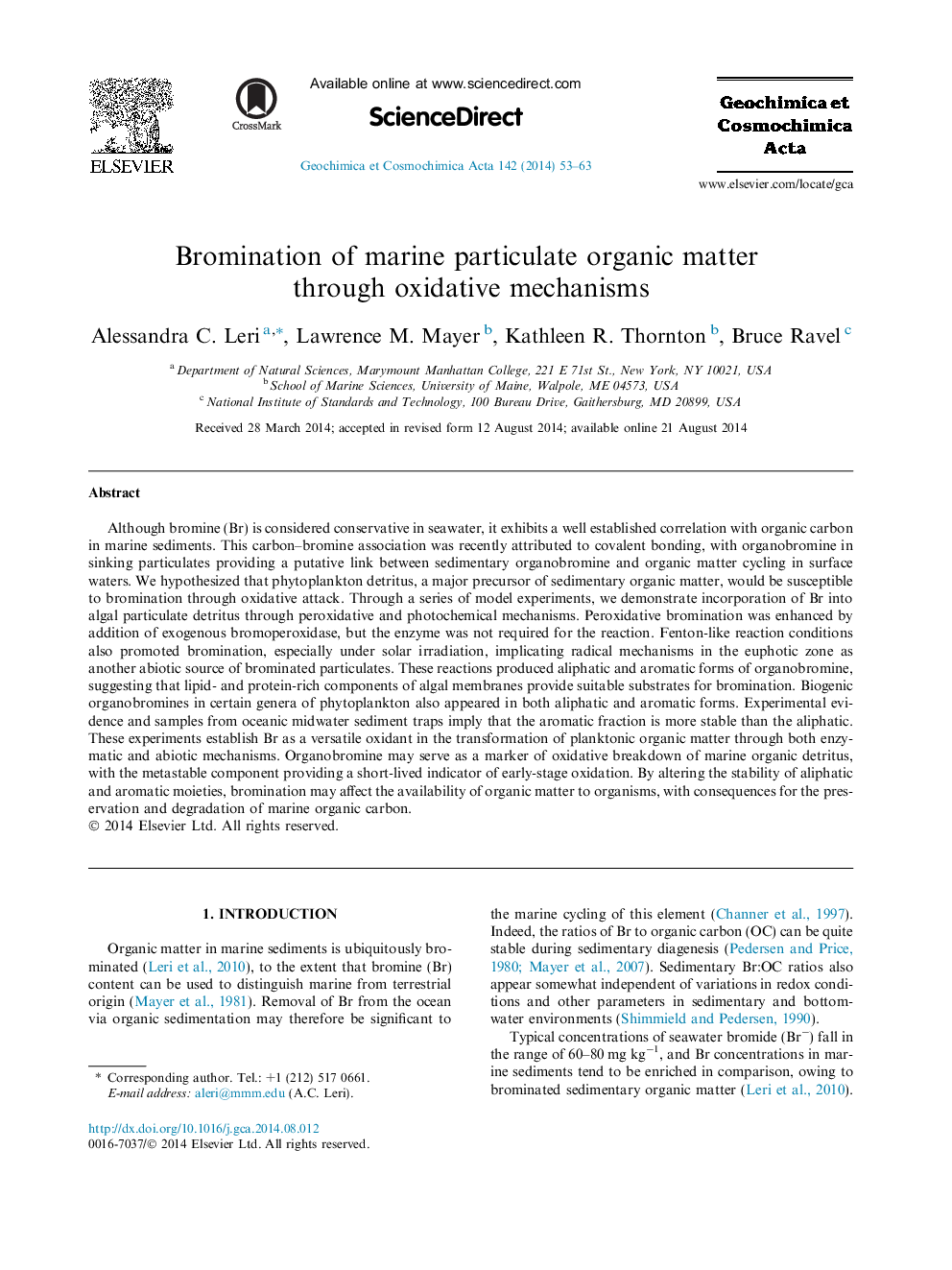| Article ID | Journal | Published Year | Pages | File Type |
|---|---|---|---|---|
| 6438422 | Geochimica et Cosmochimica Acta | 2014 | 11 Pages |
Abstract
Although bromine (Br) is considered conservative in seawater, it exhibits a well established correlation with organic carbon in marine sediments. This carbon-bromine association was recently attributed to covalent bonding, with organobromine in sinking particulates providing a putative link between sedimentary organobromine and organic matter cycling in surface waters. We hypothesized that phytoplankton detritus, a major precursor of sedimentary organic matter, would be susceptible to bromination through oxidative attack. Through a series of model experiments, we demonstrate incorporation of Br into algal particulate detritus through peroxidative and photochemical mechanisms. Peroxidative bromination was enhanced by addition of exogenous bromoperoxidase, but the enzyme was not required for the reaction. Fenton-like reaction conditions also promoted bromination, especially under solar irradiation, implicating radical mechanisms in the euphotic zone as another abiotic source of brominated particulates. These reactions produced aliphatic and aromatic forms of organobromine, suggesting that lipid- and protein-rich components of algal membranes provide suitable substrates for bromination. Biogenic organobromines in certain genera of phytoplankton also appeared in both aliphatic and aromatic forms. Experimental evidence and samples from oceanic midwater sediment traps imply that the aromatic fraction is more stable than the aliphatic. These experiments establish Br as a versatile oxidant in the transformation of planktonic organic matter through both enzymatic and abiotic mechanisms. Organobromine may serve as a marker of oxidative breakdown of marine organic detritus, with the metastable component providing a short-lived indicator of early-stage oxidation. By altering the stability of aliphatic and aromatic moieties, bromination may affect the availability of organic matter to organisms, with consequences for the preservation and degradation of marine organic carbon.
Related Topics
Physical Sciences and Engineering
Earth and Planetary Sciences
Geochemistry and Petrology
Authors
Alessandra C. Leri, Lawrence M. Mayer, Kathleen R. Thornton, Bruce Ravel,
